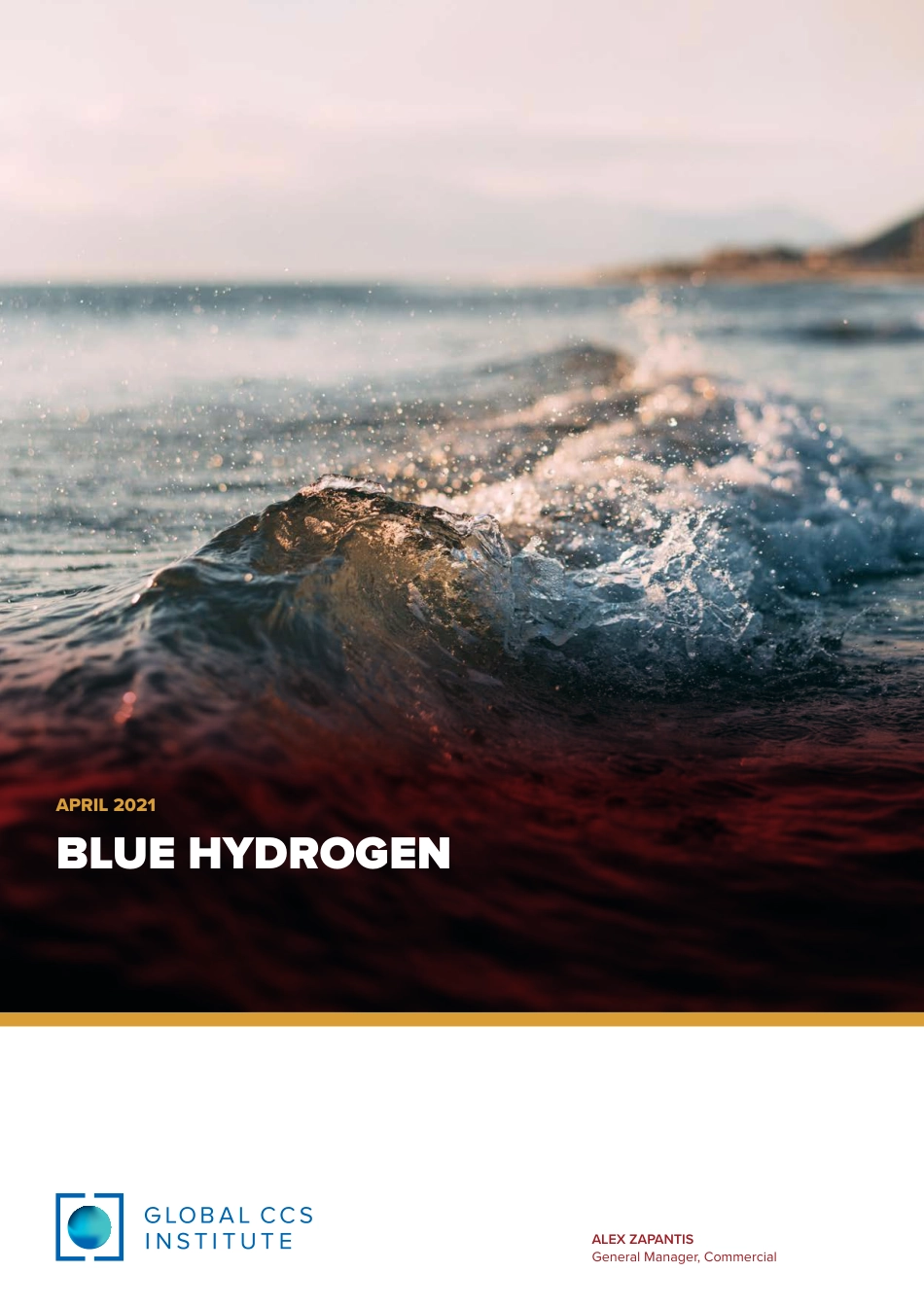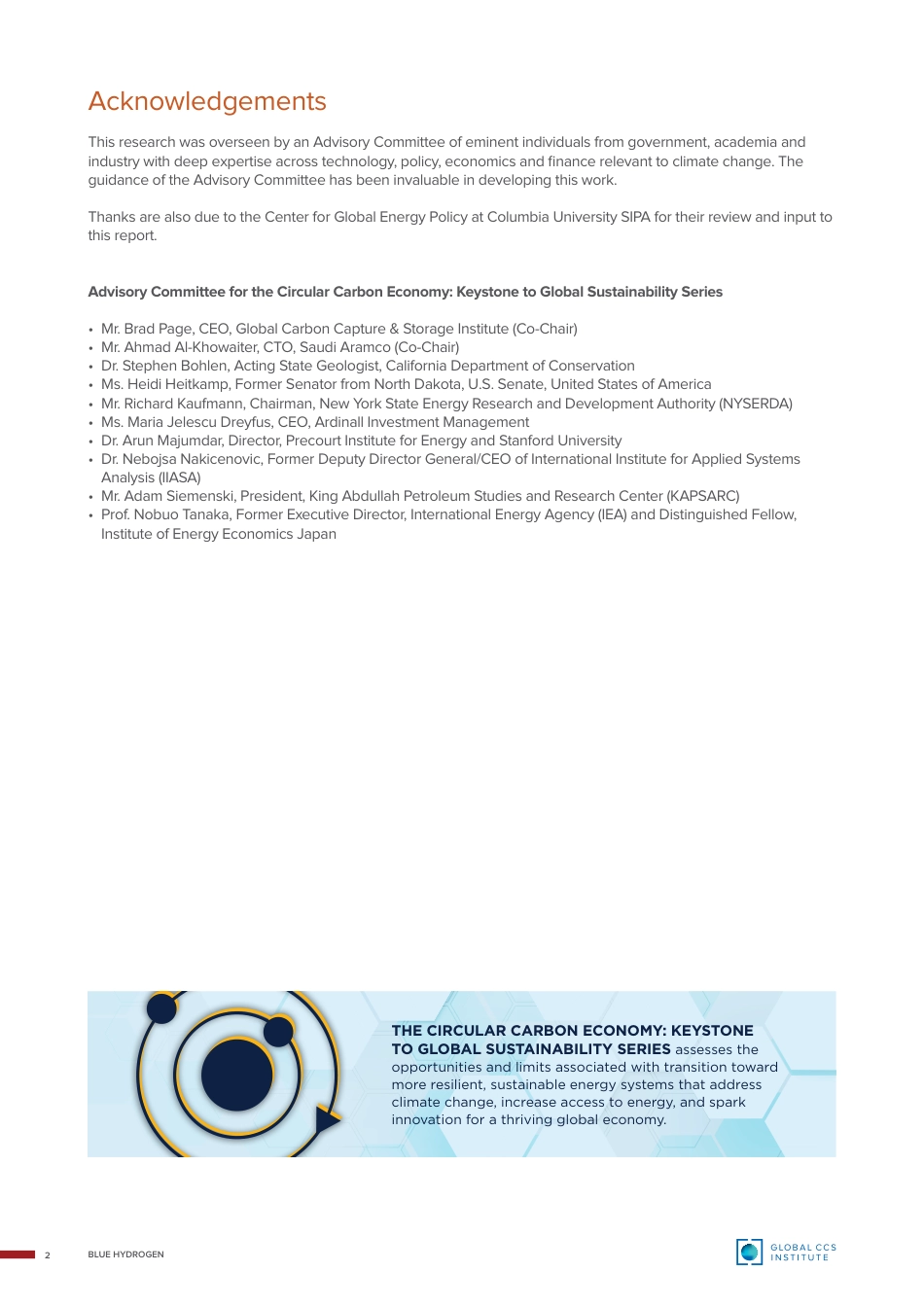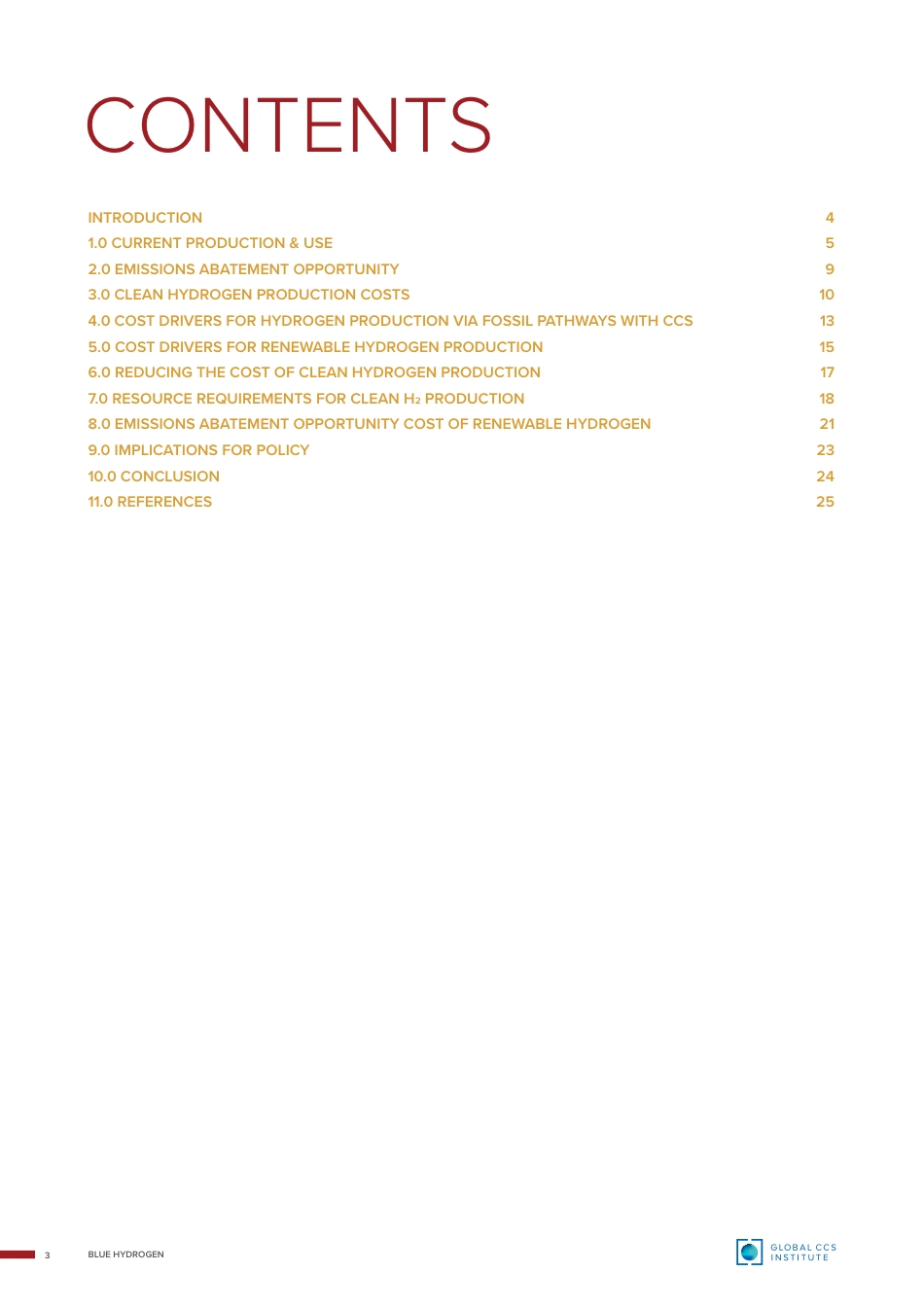ALEX ZAPANTISGeneral Manager, CommercialAPRIL 2021BLUE HYDROGENBLUE HYDROGEN2AcknowledgementsThis research was overseen by an Advisory Committee of eminent individuals from government, academia and industry with deep expertise across technology, policy, economics and finance relevant to climate change. The guidance of the Advisory Committee has been invaluable in developing this work. Thanks are also due to the Center for Global Energy Policy at Columbia University SIPA for their review and input to this report.Advisory Committee for the Circular Carbon Economy: Keystone to Global Sustainability Series• Mr. Brad Page, CEO, Global Carbon Capture & Storage Institute (Co-Chair)• Mr. Ahmad Al-Khowaiter, CTO, Saudi Aramco (Co-Chair)• Dr. Stephen Bohlen, Acting State Geologist, California Department of Conservation• Ms. Heidi Heitkamp, Former Senator from North Dakota, U.S. Senate, United States of America• Mr. Richard Kaufmann, Chairman, New York State Energy Research and Development Authority (NYSERDA)• Ms. Maria Jelescu Dreyfus, CEO, Ardinall Investment Management• Dr. Arun Majumdar, Director, Precourt Institute for Energy and Stanford University• Dr. Nebojsa Nakicenovic, Former Deputy Director General/CEO of International Institute for Applied Systems Analysis (IIASA)• Mr. Adam Siemenski, President, King Abdullah Petroleum Studies and Research Center (KAPSARC)• Prof. Nobuo Tanaka, Former Executive Director, International Energy Agency (IEA) and Distinguished Fellow, Institute of Energy Economics JapanTHE CIRCULAR CARBON ECONOMY: KEYSTONE TO GLOBAL SUSTAINABILITY SERIES assesses the opportunities and limits associated with transition toward more resilient, sustainable energy systems that address climate change, increase access to ...



